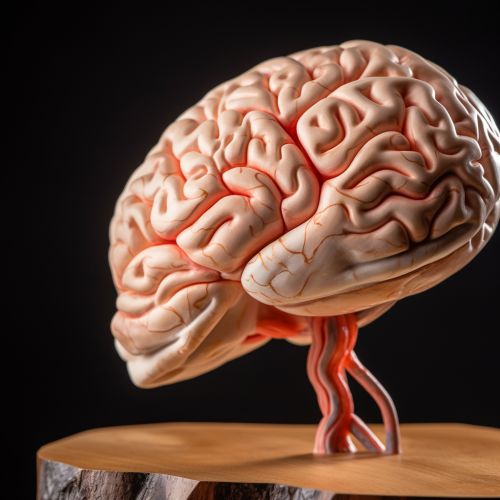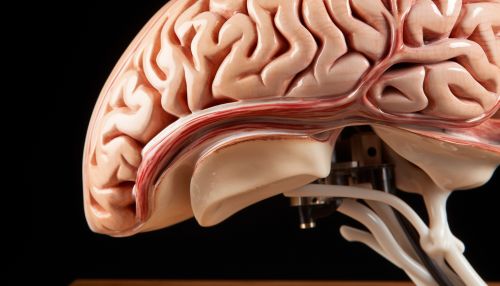Anterior hypothalamus
Anatomy and Location
The anterior hypothalamus, also known as the supraoptic region, is a part of the hypothalamus, which is a small region located at the base of the brain. It is situated above the optic chiasm and in front of the mammillary bodies. This region of the hypothalamus plays a critical role in numerous physiological functions, including the regulation of body temperature, sleep-wake cycles, and various aspects of emotion and behavior.


Function
The anterior hypothalamus is involved in a variety of physiological functions due to its extensive connections with other brain regions and its role in the regulation of the endocrine system.
Thermoregulation
One of the primary functions of the anterior hypothalamus is thermoregulation. It acts as the body's thermostat, receiving input from peripheral thermoreceptors and adjusting the body's temperature accordingly. When the body's temperature rises, the anterior hypothalamus initiates cooling mechanisms, such as sweating and vasodilation. Conversely, when the body's temperature falls, it triggers warming mechanisms like shivering and vasoconstriction.
Sleep-Wake Regulation
The anterior hypothalamus also plays a crucial role in sleep regulation. The ventral tegmental area (VTA) of the anterior hypothalamus contains neurons that release hypocretin, also known as orexin. These neurons are active during wakefulness and inactive during sleep, suggesting a role in promoting wakefulness.
Emotional and Behavioral Regulation
The anterior hypothalamus is involved in the regulation of various aspects of emotion and behavior. It is particularly associated with the expression of aggression and sexual behavior. The sexually dimorphic nucleus (SDN) located in the anterior hypothalamus is believed to influence sexual orientation and gender identity.
Clinical Significance
The anterior hypothalamus has been implicated in several disorders, including sleep disorders, thermoregulatory disorders, and behavioral disorders.
Sleep Disorders
Disruptions in the hypocretin system in the anterior hypothalamus have been linked to narcolepsy, a sleep disorder characterized by excessive daytime sleepiness and sudden attacks of sleep.
Thermoregulatory Disorders
Damage to the anterior hypothalamus can result in impaired thermoregulation, leading to conditions such as hypothermia or hyperthermia. This can occur as a result of traumatic brain injury, stroke, or neurodegenerative diseases.
Behavioral Disorders
Alterations in the function of the anterior hypothalamus have been associated with behavioral disorders such as aggression and hypersexuality. Additionally, the SDN of the anterior hypothalamus has been implicated in gender dysphoria and sexual orientation.
Research
The anterior hypothalamus continues to be a focus of research in neuroscience due to its involvement in numerous physiological functions and its association with various disorders. Current research is exploring the molecular and cellular mechanisms underlying its functions, as well as potential therapeutic targets for disorders associated with the anterior hypothalamus.
